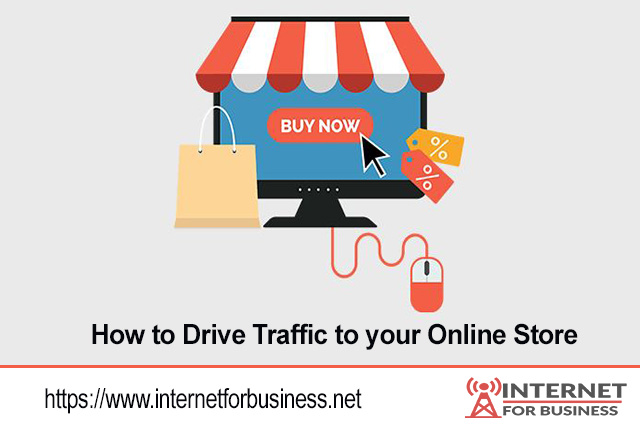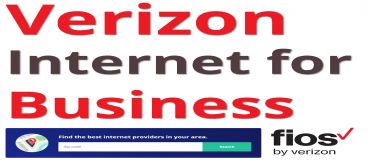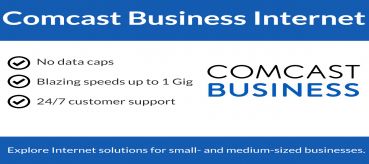How to Drive Traffic to your Online Store

Maintaining an online store is not an easy task. Even if you have a beautiful website, it still will need to be powered by integrated e-commerce software to streamline operations across the board and minimize slowdowns and failures. To handle increased traffic — and subsequent orders — an effective e-commerce software solution is a must for smooth user experience.
Driving traffic to your e-commerce website will likely involve content marketing, a responsive website design, and elements of SEO.
Also, Read: How to Market Your Business Using The Internet?
Social media
If you have content on your website but are having trouble with getting traffic to it, social media channels can be powerful marketing engines and can help make your content and brand visible to many more potential customers. Consider the following social media marketing tactics to market your e-commerce website:
Contests and giveaways: people like a good deal and/or even free stuff. Try posting giveaways and sweepstakes for your audience, and contests that will facilitate customer participation and help drive more traffic to your site.
Paid Facebook, Instagram, Pinterest ads: depending on the nature of your business and your audience, you may choose to run social media ad campaigns on one social media channel over another.
Mobile First
In 2019 mobile devices generated 52.6% of global website traffic. With more than half of the traffic coming from mobile devices, you will need to make sure that your website employs responsive design.
Of course, mobile device screens are smaller than that of a desktop computer. People visiting your website via mobile devices may become frustrated with walls of text, large-sized images, and other things that may not seem annoying on a larger screen. Make sure the layout and content respond to any screen it will be displayed on — automatically changing to fit across any device.

Loading times may also steer mobile visitors away from your e-commerce site, as mobile devices are essentially smaller computers. With the many elements needed to be loaded on an e-commerce site, you will want an up-to-date software to effectively handle mobile users. This will include minimizing loading times from everything to loading blog content to providing a straightforward order management process.
Drive traffic with an advertising campaign
Advertising your brand and services is essential for success. Those with an e-commerce store may run television ads, however, a major focus should be on content marketing.
Creating blogs, videos, and infographics that engage your target audience can be invaluable for an e-commerce business. Since your store is online, it only makes sense to create content for online users to get the word out about your business. This could include providing blog content that revolves around your products and services, creating videos to explain the nature of your brand, and providing infographics with statistics and figures of the successes of your company.

Also Read : Things to Consider when Launching a Small Business Website
Search Engine Optimization
A significant portion of traffic should come from people searching for products and services on search engines like google and bing. However, if your site is not properly optimized, it will not be presented as a solution for these searchers.
SEO, or search engine optimization, refers to optimizing your website and its content so that search engines — especially Google — can understand what your site is about and what your online store is selling. This, in turn, will increase the likelihood that your website and its pages of content (especially product pages) will rank higher in the search engine results pages.
Alternatively, if your customers can’t find your store online, you are missing out on a considerable amount of traffic.
Also Read : These the Benefits of an eCommerce to Your Business
Regular housekeeping for your e-commerce site
Even if you are seeing an increase in traffic, it is important not to default to autopilot-mode when it comes to your e-commerce website. You will need to stay on top of several things to keep your website a success and maintain traffic.
Loading speed: as mentioned above, pages that take a long time to load can turn a potential customer away from your site entirely. Make sure to upgrade your web hosting provider, uninstall plug-ins that aren’t being used, and compress heavy photo and/or video files to minimize load speed. Additionally, you should check load times across the variety of devices your content may be displayed on. A strong e-commerce software solution that leverages your ERP can help you maintain loading speeds for your web store and make for a better experience for customers.
Update your SEO: search engine algorithms such as Google’s are constantly updating and changing to provide better results for searchers. Staying current with SEO best practices can keep your website visible in the search engine results pages and maintain your traffic. This may include updating the keywords, headers, and meta-content of your site’s pages.
Website design: constantly examining the design of your website and what you can do to increase user experience should always be an objective. As your site grows and times change, you may need to adapt to a changing audience and their needs. Reviewing your website design can keep it fresh and appealing while increasing its functionality — providing great user experience.
Related Articles:
Here's Why Your Business Needs a Blog
How to Prepare Your Business for Customer Wifi Demand
Related Posts
Wed, Apr 22, 2020 11:34 PM
Find Verizon Internet for Business Near You!
Verizon provides Internet for business in more than 40 states in the US, speeds are limited to 15 Mbps, and many businesses will need more juice. If you're in the Northeast, you can enjoy high-speed Internet via Verizon's FiOS. This is ideal for businesses that need high speeds, such as restaurants, hotels, medical facilities, hospitals, schools, and other businesses.
Thu, Apr 23, 2020 12:00 AM
5 Best Small Business Internet Service Providers (2021)
The following Internet Service Providers are not listed in any particular order, but we have ranked these five companies as worthwhile due to some key factors such as speed, reliability, cost, and overall customer satisfaction.
Mon, Apr 20, 2020 11:13 PM
Business Internet Guides for Entrepreneurs
Small businesses need to grow, but how big should your business become before you buy it online? Whether you started out as a sideshow or a brick-and-mortar business, successful small businesses are finding it increasingly difficult to decide when to shell out money for an Internet business.
Thu, Apr 23, 2020 11:52 PM
Why Business Internet is More Expensive Than Residential Internet
This question is asked so often today that it seems worth explaining, but here are 5 reasons why business Internet is more expensive than Residential Internet packages.
Fri, Apr 24, 2020 5:17 AM
Comcast Internet For Business: Internet, Phone, TV, and Other Solutions for your Business.
Comcast Business is US largest cable provider for small and medium-sized businesses and has become a force in the market, recognized by leading industry over the past two years as one of the fastest-growing providers of high-speed broadband to business customers




